
Roots
Have you ever considered the quiet whispers held within each strand, the stories woven into the very fabric of our being? Hair, a seemingly simple aspect of our physical form, often holds secrets deeper than its visible length or texture. It carries legacies, echoes of practices long past, and a silent language spoken across generations.
To truly grasp how pre-colonial African hairstyles communicated social standing, we must first allow ourselves to feel the grounding presence of history, to perceive hair not merely as adornment, but as a living archive, a profound connection to collective identity and individual worth. This exploration begins at the very source, seeking the elemental truths that shaped societies long before external influences altered their rhythms.
In countless African societies prior to the colonial intrusion, hair was a powerful medium of non-verbal communication. It transcended simple aesthetics, acting as a visual ledger of an individual’s place within their community. A person’s hairstyle could instantly convey a wealth of personal details, understood by all who shared that cultural space.
This was a sophisticated system, where every braid, twist, or adornment contributed to a visible declaration of self and circumstance. The practices were not arbitrary; they were deeply embedded in the daily routines and ceremonial life of the people.
Pre-colonial African hairstyles served as a dynamic, non-verbal language, visually communicating an individual’s standing within their community.

What Did Hairstyles Announce in Early African Societies?
The range of information conveyed through hair was remarkably extensive. It spoke of one’s Age, signaling rites of passage from childhood to adolescence, then to adulthood and elder status. A young woman might wear her hair in a distinct pattern marking her readiness for marriage, while a married woman’s style would alter to reflect her new standing.
Similarly, men’s hairstyles often shifted with their age, denoting their progression through societal roles and responsibilities. The patterns and lengths were codified, forming a recognizable grammar of life’s stages.
Beyond age, hair often indicated Marital Status. In some cultures, single women wore braids or cornrows, while married women might adopt looser styles or cover their hair. The Himba people, for instance, used dreadlocks worn in front of a woman’s face to signify puberty, shifting to styles tied at the back when seeking marriage. Such visible markers provided clear, immediate signals within social interactions, streamlining communication without the need for spoken words.
- Social Standing ❉ Hairstyles clearly marked an individual’s position within the societal hierarchy, from commoner to royalty.
- Group Affiliation ❉ Specific styles often identified a person’s tribal or ethnic origin, serving as a powerful bond within their group.
- Life Stage ❉ Changes in hair design reflected significant life events such as puberty, marriage, childbirth, or widowhood.
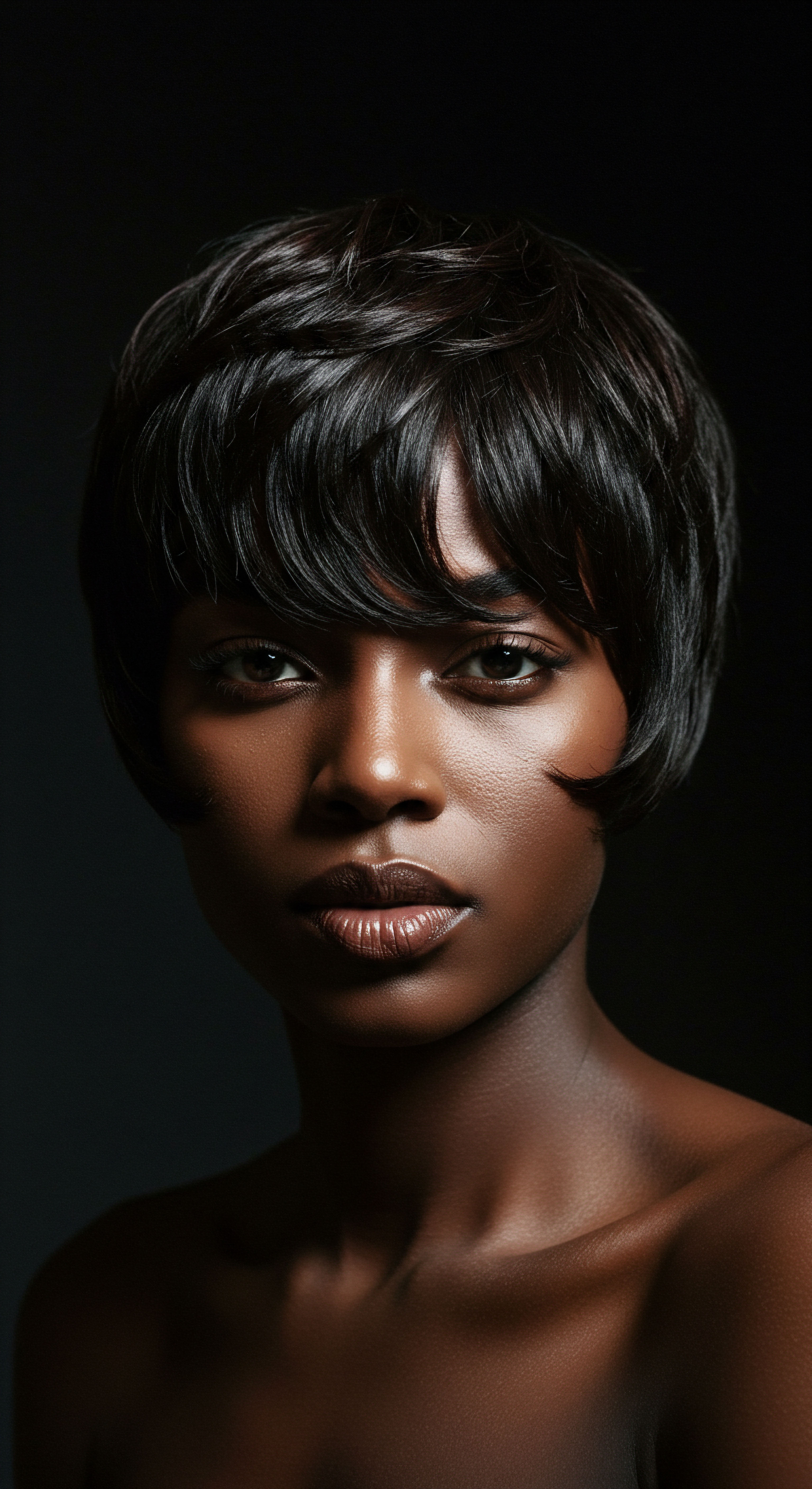
How Did Regional Variations Influence Hair’s Meaning?
The continent of Africa, vast and diverse, hosted myriad cultures, each with its own distinct traditions surrounding hair. While commonalities existed in the underlying principle of hair as a status indicator, the specific expressions varied greatly from one region to another, from one community to the next. The Yoruba people of what is now Nigeria, for instance, created highly intricate hairstyles that did more than simply signify; they symbolized specific community roles and even acted as a conduit for spiritual energy. Their hairstyling was not merely a cosmetic practice; it was a deeply spiritual act.
Across the Sahara, the Fulani, a semi-nomadic group, adorned their thin, precise braids with cowrie shells and beads, using these additions to display not only marital status but also accumulated wealth and familial connections. The very materials used in hair ornamentation could speak volumes about a person’s economic standing, transforming natural hair into a canvas for tangible assets. This localized expression underscores the profound connection between hair and identity, a connection that was intrinsically linked to the distinct cultural fabric of each community.
The attention given to hair was also a reflection of personal well-being and social responsibility. In some Nigerian communities, for example, hair that appeared “undone” could convey a state of depression, uncleanliness, or even mental instability. This demonstrates how the communal understanding of hair extended beyond mere beauty standards to encompass deeper societal perceptions of health, order, and participation within the collective. The state of one’s hair was, in essence, a public report on one’s private world.

Ritual
Stepping from the foundational insights of hair’s communicative power, we now turn our gaze to the deliberate actions and shared experiences that brought these meanings to life. Consider the hands that carefully sectioned, twisted, and adorned, the conversations that flowed during hours of communal grooming, and the deep understanding that permeated each gesture. The creation of pre-colonial African hairstyles was seldom a solitary act; it was a ritual, a practice steeped in practical wisdom and shared understanding. It speaks to the daily and periodic rhythms that shaped societal structures, revealing how techniques and methods were passed down with gentle guidance, making the ordinary extraordinary.
The creation of elaborate hairstyles was often a lengthy and collaborative endeavor, spanning hours, even days, to complete. This investment of time was not a burden but an opportunity for social interaction and bonding. Women, particularly, would gather, sharing stories, advice, and laughter as they worked on each other’s hair.
This communal grooming reinforced social ties, solidified relationships, and allowed for the transmission of cultural knowledge, from styling techniques to societal norms. It was a space of quiet instruction and vibrant connection.
Pre-colonial African hairstyling was a communal practice, fostering social bonds and transmitting cultural knowledge through shared ritual.
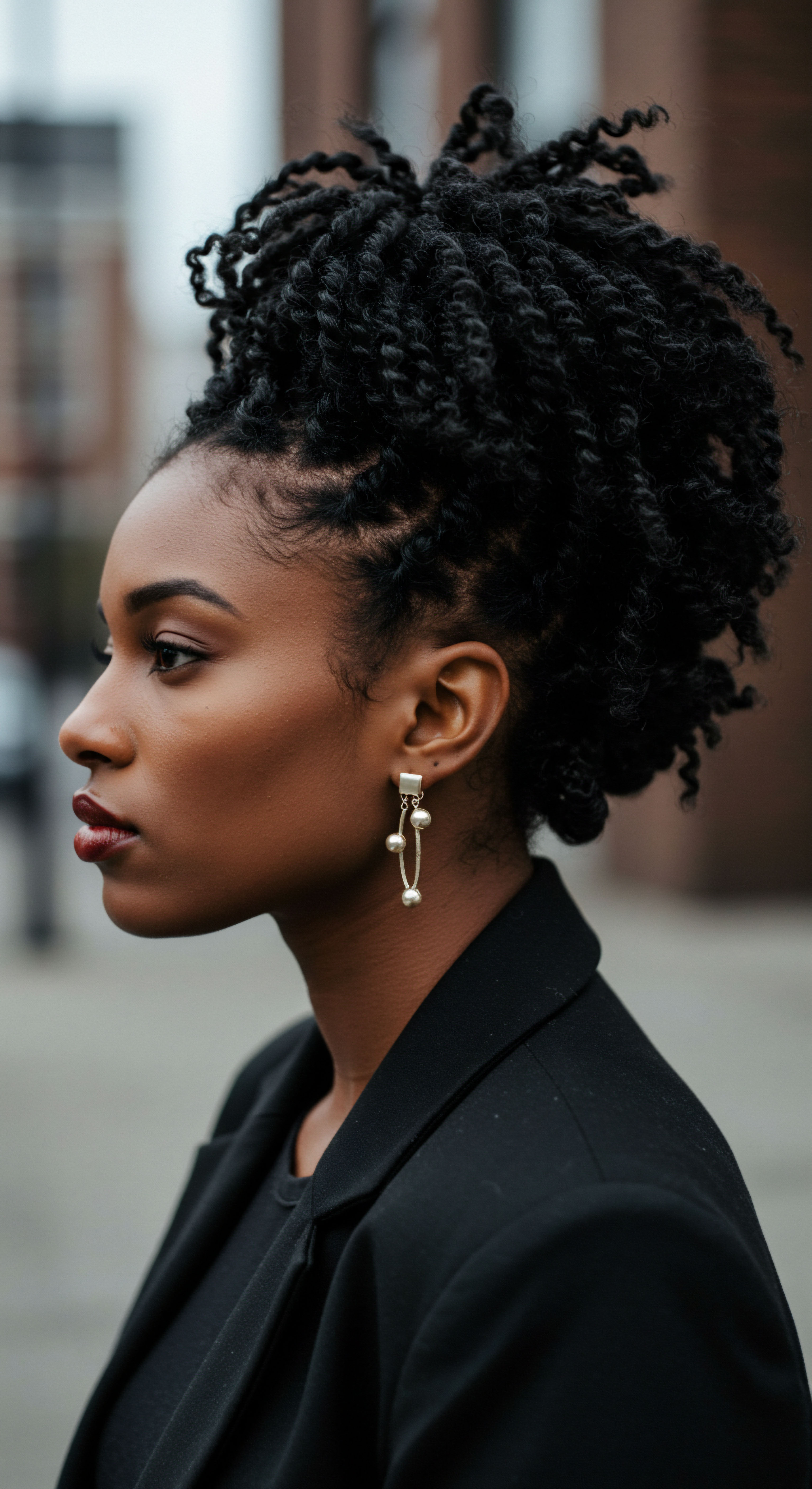
What Role Did Skilled Artisans Hold?
Within many African societies, the individuals who possessed the talent for creating these intricate styles were highly regarded. They were not merely stylists; they were artisans, custodians of cultural codes, and often, spiritual guides. Their hands held the ability to translate societal standing, spiritual beliefs, and personal histories into visible form.
In Yoruba culture, skilled braiders held a position of deep respect, their artistry seen as a sacred practice connecting individuals to their ancestors and deities. This elevation of the stylist speaks volumes about the importance placed on hair as a cultural artifact.
The tools employed in these styling rituals, though seemingly simple, were often crafted with care and imbued with significance. Combs, pins, and razors, made from wood, bone, or metal, were essential for shaping and maintaining these elaborate creations. Adornments, too, played a vital role, transforming a hairstyle into a complex tableau of meaning. Shells, beads, feathers, and metal pieces were carefully selected and positioned, each carrying its own symbolism related to wealth, status, or spiritual protection.
- Adornment as Indicator ❉ Materials like cowrie shells, beads, and precious metals directly reflected wealth and social standing.
- Communal Bonding ❉ The lengthy process of styling fostered social cohesion and reinforced community ties.
- Spiritual Conduits ❉ Certain hairstyles and adornments were believed to open channels for communication with ancestral spirits.
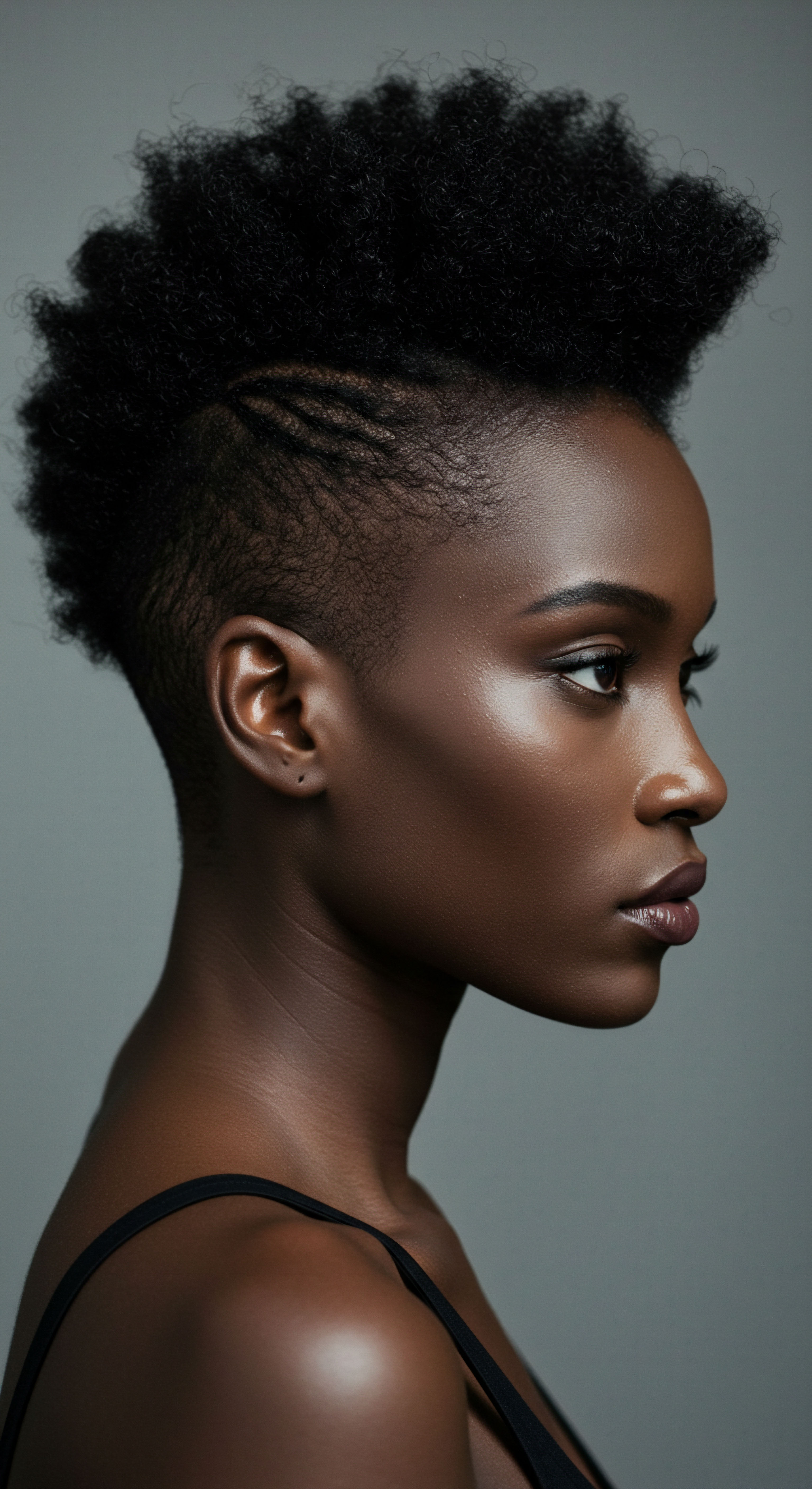
How Did Hair Serve as a Spiritual Portal?
Beyond the social and aesthetic, hair held profound spiritual meaning in many pre-colonial African belief systems. It was often considered the most elevated part of the body, a direct conduit to the divine and the ancestral realm. This belief transformed hairstyling into a sacred act, a means of aligning oneself with cosmic forces or receiving guidance from those who had passed on. The Yoruba, for example, believed that braided hair could be used to send messages to the gods, making the act of styling a form of prayer or supplication.
This spiritual dimension meant that hair was treated with immense reverence. It was thought to possess magical powers, capable of casting spells, offering protection, or even influencing fertility. The careful disposal of hair trimmings, often in specific ceremonial ways, underscored its potency and the respect it commanded. The rituals surrounding hair were not merely about appearance; they were about connecting the individual to the unseen world, ensuring harmony and protection.
The meticulous attention paid to hair, from its daily care to its elaborate styling for special occasions, reflected a deeply ingrained understanding of its multifaceted purpose. It was a practice that blended the practical with the profound, where every twist and coil carried weight, silently narrating a story of identity, community, and connection to something greater than oneself. This intricate relationship between hair and daily life served as a constant affirmation of an individual’s place within the societal and spiritual order.
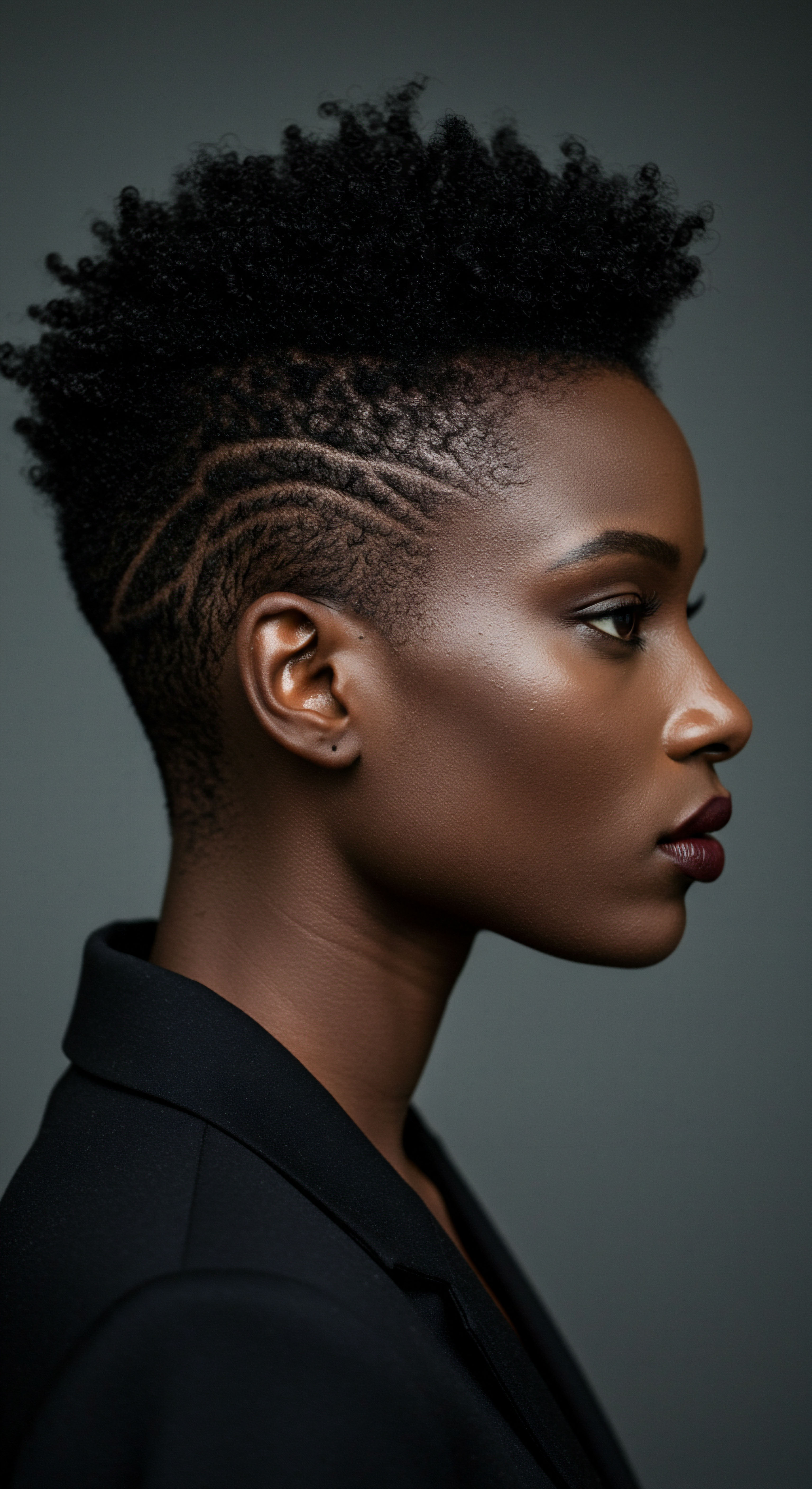
Relay
We now venture into the deeper currents of understanding, where the visible artistry of pre-colonial African hairstyles meets the unseen forces of economics, politics, and the enduring echoes of history. How did these complex expressions truly function within the intricate web of societal power, and what can their legacy teach us about value beyond the obvious? This segment invites a profound exploration, where the threads of cultural practice, scientific observation, and historical context converge to reveal a tapestry of meaning that is both rich and often challenging. It asks us to look beyond the surface, to perceive the intricate interplay of factors that shaped these powerful visual declarations.
The sheer investment of time and specialized skill in creating many pre-colonial African hairstyles represents a fascinating economic dynamic. Unlike fleeting trends, these styles often required days of dedicated labor, utilizing specific tools and precious adornments. This labor was not merely a domestic chore; it was a specialized craft, often performed by master stylists who held significant societal standing.
Their expertise was a valuable commodity, and their services were sought after, sometimes reserved for those of particular means or standing. This system highlights a localized economy of beauty, where artistic skill and communal cooperation were tangible assets.
The extensive time and specialized skill involved in pre-colonial African hairstyling reveal a sophisticated economic system centered on beauty and social capital.

How Did Hair’s Economic Value Shift with Colonialism?
To grasp the true significance of pre-colonial hair practices, it becomes essential to consider their fate under the shadow of colonialism. The arrival of European powers brought with it not only new political structures but also an imposition of foreign aesthetic ideals, often accompanied by a systematic devaluation of indigenous African beauty. The forced shaving of heads during the transatlantic slave trade, ostensibly for “sanitary reasons,” was in reality a deliberate act of dehumanization, stripping individuals of their identity and cultural connections. This act was a direct assault on a system where hair was a primary marker of social standing and personal history.
The shift was stark. Pre-colonial societies celebrated the natural textures and forms of African hair, investing immense resources in its care and styling. Yet, with colonial rule, the perception of African hair began to be negatively pathologized, often labeled as “unruly” or “unprofessional”. This cultural subjugation had tangible economic repercussions.
Post-emancipation, the pursuit of straightened hair became linked to economic opportunity and social advantage within a Eurocentric framework. This created a disjunction, where the inherent value and economic agency associated with traditional hair practices were eroded.
Consider the modern landscape ❉ The global Black hair care industry today represents a multi-billion dollar market. Yet, a stark reality remains ❉ Black entrepreneurs account for a mere 3% of the total ownership of products marketed to them. This contemporary statistic, while concerning in its own right, gains a sharper edge when viewed through the lens of pre-colonial practices.
It suggests a profound historical disjunction, a loss of indigenous economic control over a cultural domain that was once a source of significant wealth and specialized labor within African communities. The deliberate undermining of traditional hair practices by colonial forces did not simply alter aesthetics; it disrupted established economic systems and dispossessed communities of their cultural capital.
| Aspect Primary Value Driver |
| Pre-Colonial African Societies Skilled artisan labor, cultural significance, communal investment |
| Modern Black Hair Care Industry Product sales, marketing, global distribution |
| Aspect Economic Agency |
| Pre-Colonial African Societies Significant local control, respected professional class of stylists |
| Modern Black Hair Care Industry Limited ownership by Black entrepreneurs (approx. 3%) |
| Aspect Societal Perception |
| Pre-Colonial African Societies High status, spiritual connection, identity marker |
| Modern Black Hair Care Industry Often subject to Eurocentric beauty standards, discrimination |
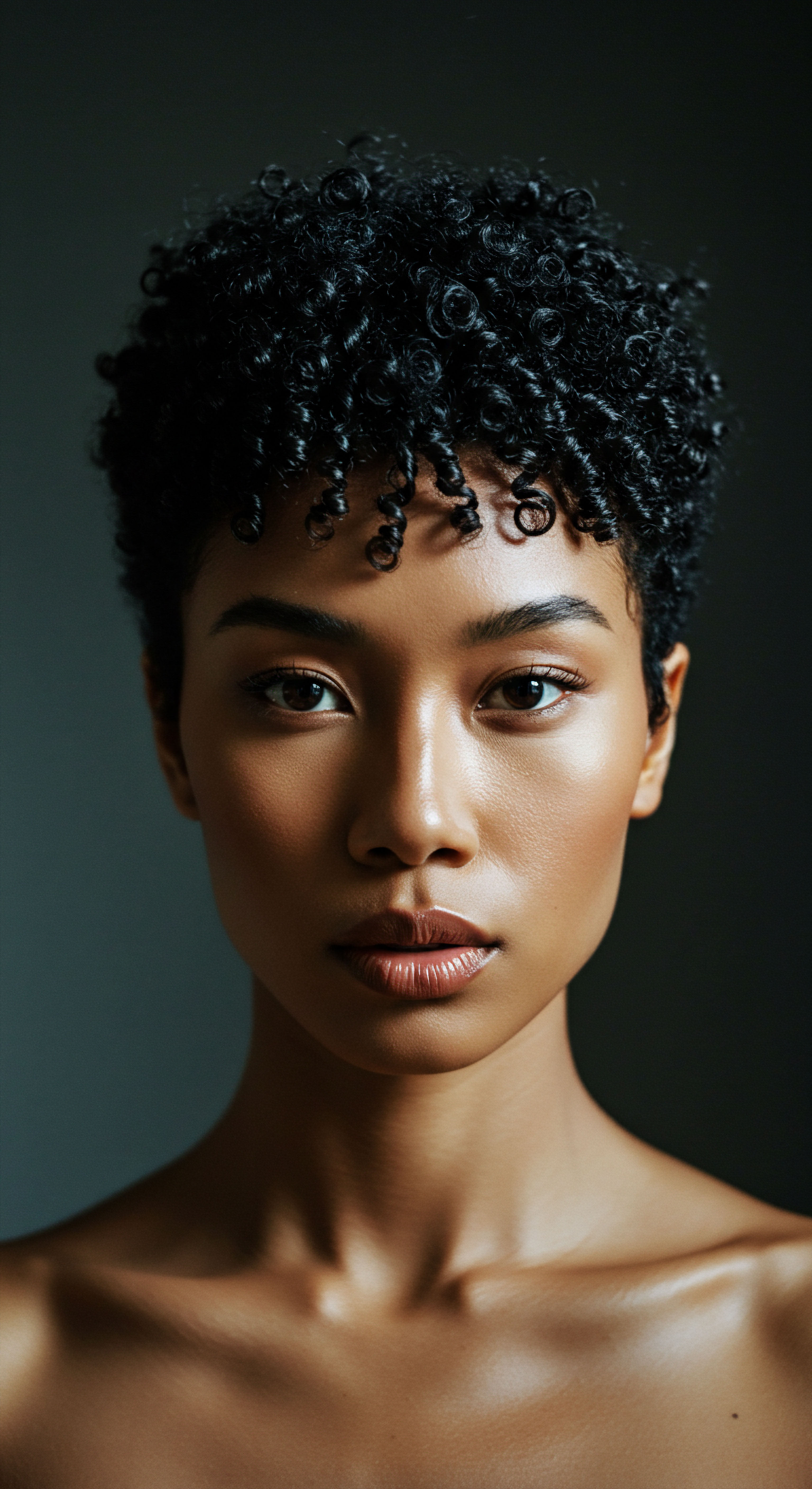
What Does Hair Reveal About Political Authority?
Beyond economics, pre-colonial African hairstyles were deeply intertwined with political authority and social order. The most ornate and complex styles were often reserved for royalty, chiefs, and other community leaders, both male and female. These styles were not just a sign of their position; they were part of the regalia that visually reinforced their power and legitimacy. A leader’s hair could be a public declaration of their connection to ancestral wisdom, their wealth, and their capacity to govern.
The significance extended to ceremonial contexts. Hairstyles were customized for specific occasions, from weddings and coming-of-age ceremonies to preparations for war. A Wolof man’s braided beard, for example, could signal his readiness for battle. Such specific stylistic choices served as a visual language of intent and status, understood by all members of the society, facilitating clear communication in critical moments.
The cultural meanings embedded in hair also contributed to social control and cohesion. The expectation of neat, well-maintained hair, as seen in the Nigerian example where “undone” hair signified a breakdown of order, served as a subtle mechanism for upholding communal standards. Hair, therefore, was not merely a personal choice; it was a public statement, reflecting one’s adherence to societal norms and one’s place within the collective hierarchy. This intricate interplay of personal expression and collective understanding showcases the profound and often overlooked role of hair in shaping pre-colonial African social structures.
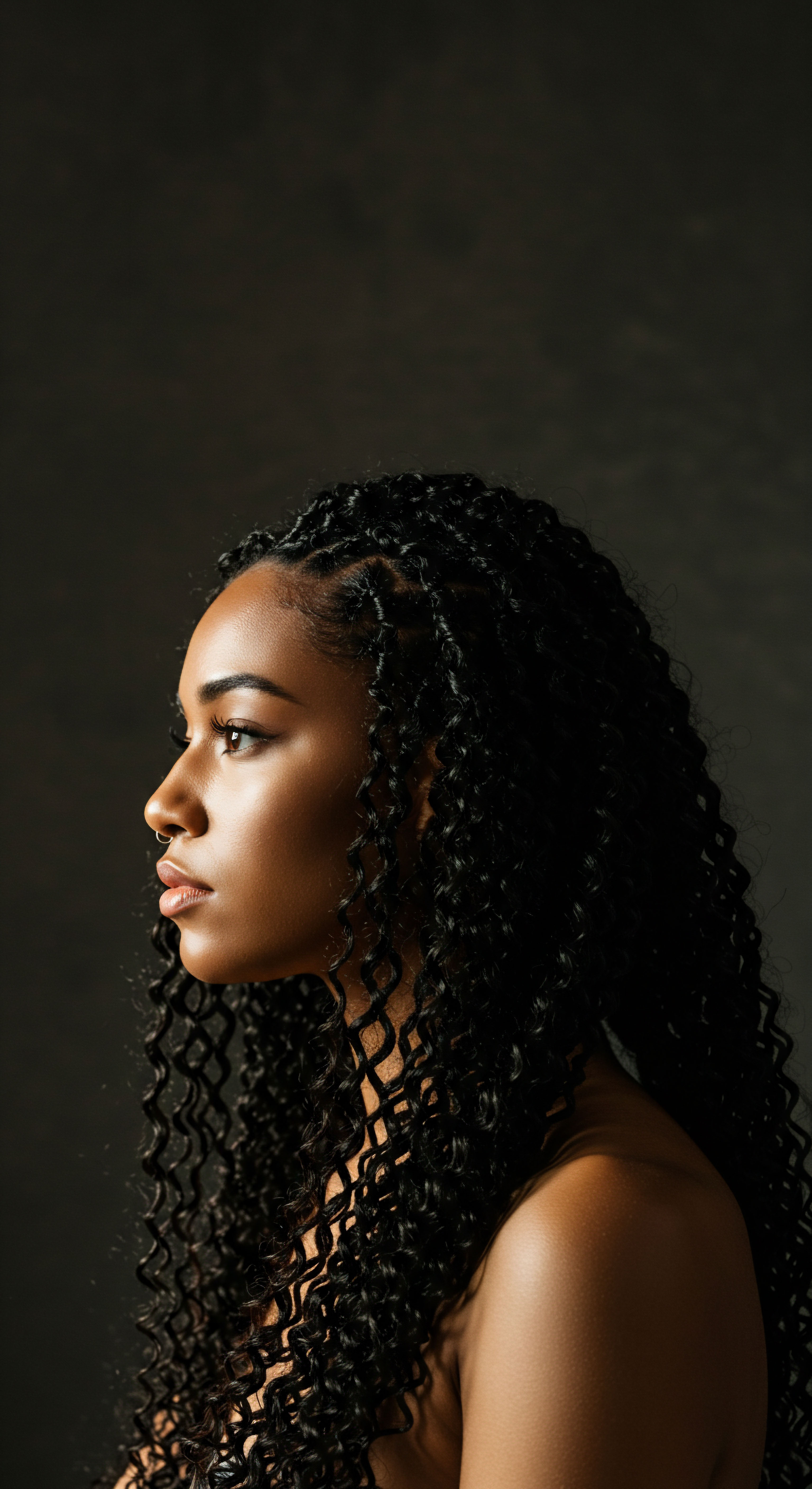
Reflection
As we step back from the intricate world of pre-colonial African hairstyles, a profound truth emerges ❉ hair is never merely hair. It is a vibrant testament to human ingenuity, a silent storyteller, and a resilient keeper of culture. The patterns, adornments, and rituals we have explored reveal societies where every strand held meaning, where personal expression and communal identity were deeply intertwined.
These historical practices stand as a gentle reminder that true value often lies not in what is universally proclaimed beautiful, but in what is authentically expressed, deeply rooted, and collectively understood. The legacy of these traditions continues to ripple through time, inviting us to look closer, listen more intently, and honor the rich narratives that shape our textured crowns today.

References
- Oforiwa, Alice. “The History and Culture of African Natural Hair ❉ From Ancient Times to Modern Trends.” AMAKA Studio, 2023.
- Afriklens. “African Hairstyles ❉ Cultural Significance and Legacy.” Afriklens, 2024.
- Byrd, Ayana, and Lori Tharps. “Hair Story ❉ Untangling the Roots of Black Hair in America.” St. Martin’s Press, 2001.
- Queen’s Journal. “History, identity, and community ❉ The significance of Black hair.” The Queen’s Journal, 2025.
- University of Salford Students’ Union. “The Remarkable History Behind Black Hairstyles.” University of Salford Students’ Union, 2024.
- Heaven, Jimi. “Natural Black Hair and Its Connection to Cosmic Spirituality.” GoNevis, 2021.
- African American Museum of Iowa. “History of Hair.” African American Museum of Iowa.
- Africa Facts Corner. “The History and Culture of African Natural Hair.” Africa Facts Corner, 2024.
- Gale Review. “African Hairstyles – The “Dreaded” Colonial Legacy.” The Gale Review, 2021.
- NativeMag. “Examining the history and value of African hair.” NativeMag, 2020.
- Smithsonian National Museum of African Art. “Yoruba ❉ Art and Life in Africa.”
- Auster, Gara. “It’s More Than “Just” Hair ❉ Revitalization of Black Identity.” Folklife Magazine, 2022.
- Wikipedia. “African-American hair.” Wikipedia.
- Costume Institute of the African Diaspora. “Black Hair/Style Politics.” Costume Institute of the African Diaspora.
- Omotoso, Sharon Adetutu. “Gender and Hair Politics ❉ An African Philosophical Analysis.” Africology ❉ The Journal of Pan African Studies, 2018.
- Byrd, Ayana, and Lori Tharps. “Hair Story ❉ Untangling the Roots of Black Hair in America.” St. Martin’s Press, 2014.
- Smith, Jessica. “Black women’s natural hair care communities ❉ social, political, and cultural implications.” Smith Scholarworks, 2017.